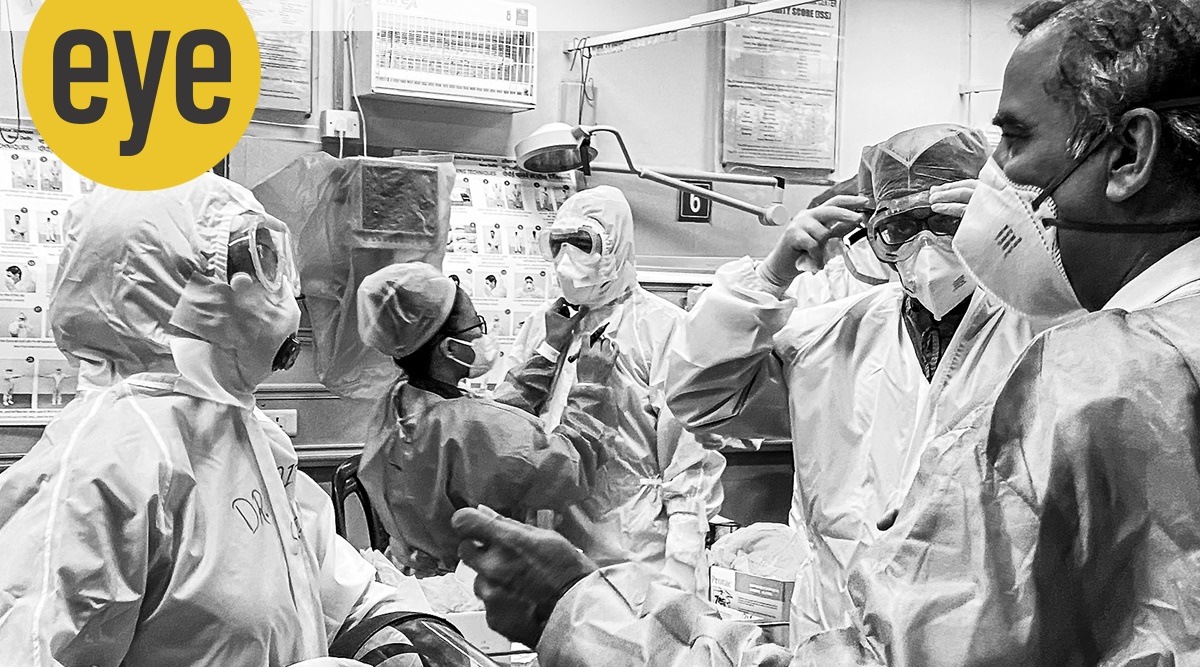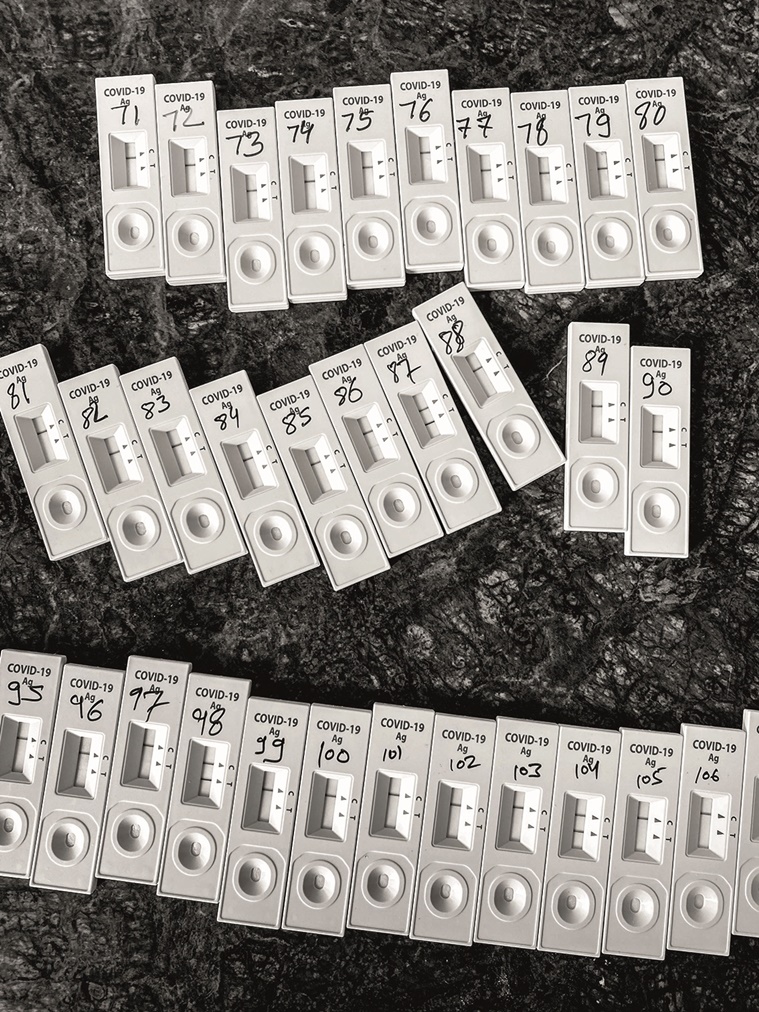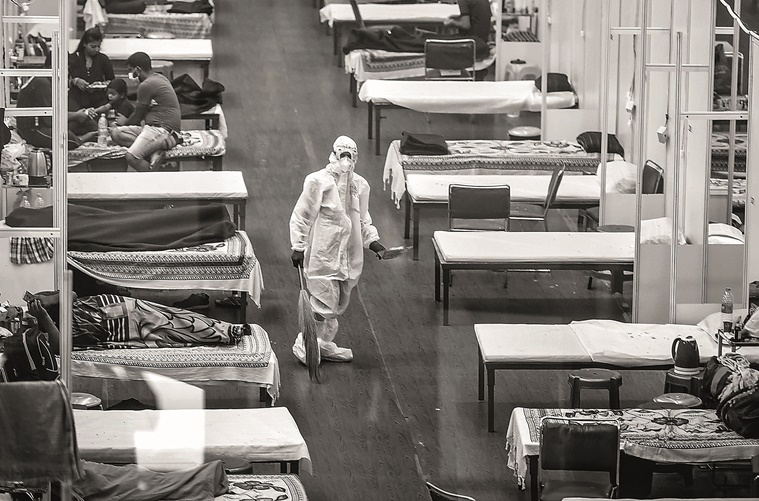 Covid Care Unit at AIIMS. (Photo: Parul Sharma)
Covid Care Unit at AIIMS. (Photo: Parul Sharma)When photographer Parul Sharma first hit the Delhi roads on April 3, almost a week after the Prime Minister announced the nationwide lockdown in the wake of COVID-19, she found “sheer beauty” in its stillness. Accustomed to the hustle-bustle of the metropolis, the empty roads she found only made “the aura of absence” more pronounced. “Our connections with ourselves, our people and our cities were very different at a time like this when everything came to a halt, everything was silent, and, in a limbo. I realised that I wanted to reconnect with the architectural spaces that I had always been drawn to but never experienced,” says Sharma.
On her initial outings, she captured with her camera phone the more familiar sites of Delhi — from the panoramic vistas of Rajpath and the spectacular Raisina Hill to the imposing white collonaded buildings of Connaught Place and its empty roads. The set of photographs opens her book Dialects of Silence: Delhi Under Lockdown (Roli Books, Rs 2,995). “It is a personal journey,” says the Delhi-based photographer. The proposal to turn her documentations into a book came as she traversed through the capital’s streets in the subsequent months, including the narrow alleys of Shahjahanabad and the Old Yamuna bridge.
 Covid Testing Centre, Vijaynagar, NCR. (Photo: Parul Sharma)
Covid Testing Centre, Vijaynagar, NCR. (Photo: Parul Sharma)
The most riveting photographs in the collection, though, are of doctors and health workers on duty. As they slid into their Hazmat suits, Sharma photographed these frontline workers “preparing for war against the virus”. The stories they told her spoke of fear and courage — of how the PPE suits, face masks and shields made it imperative for doctors to write their names on their suits, to “reassure frightened patients that they were in safe and familiar hands”. Her lens spans across the city to show us different frames of the fight against COVID-19: patients recuperating at the Commonwealth Games Village Isolation Centre; defence personnel at an isolation centre near the Indira Gandhi International airport; medical staff on round-the-clock duty at AIIMS and Safdarjung Hospital.
Before the pandemic, Sharma had photographed the Yamuna, showing a river ravaged by the city, and its relationship with the people living around it. In 2017, her debut solo “ParulScape” explored the “asymmetry of everydayness” through travel photographs. Last year, her photographs of the Ardh Kumbh Mela were exhibited at the Museo Marino Marini in Florence.
 Isolation Centre. (Photo: Parul Sharma)
Isolation Centre. (Photo: Parul Sharma)
In Dialects of Silence, too, Sharma explores how people seek comfort in faith and religion and how uncertainties of the present evoke grief and hope. The isolation of the times is captured by a brutal frame of a six-month-old abandoned by his parents, succumbing to the virus, and a young woman reading the Fatiha by her husband’s grave. “I still wake up on most dawns in a sweat, shattered with the horror and sadness and sheer aloneness of bodies that came, day in, day out, to the Nigambodh Electric Crematorium, the Muslim Burial Ground and the Christian Cemetery,” she writes.
The long march of the migrants out of Delhi finds space in the book, too, with a photograph of a woman as she begins walking home to her village and of children of migrants waiting for transport at the Anand Vihar bus station. “As a society, we should have collectively done something about it,” says Sharma.
Sharma’s photographs capture the uncertainty of a city as it struggles with a new normal and no fixed future. “Right now, we are all uncertain of how the future would be,” says Sharma.
📣 The Indian Express is now on Telegram. Click here to join our channel (@indianexpress) and stay updated with the latest headlines
For all the latest Eye News, download Indian Express App.